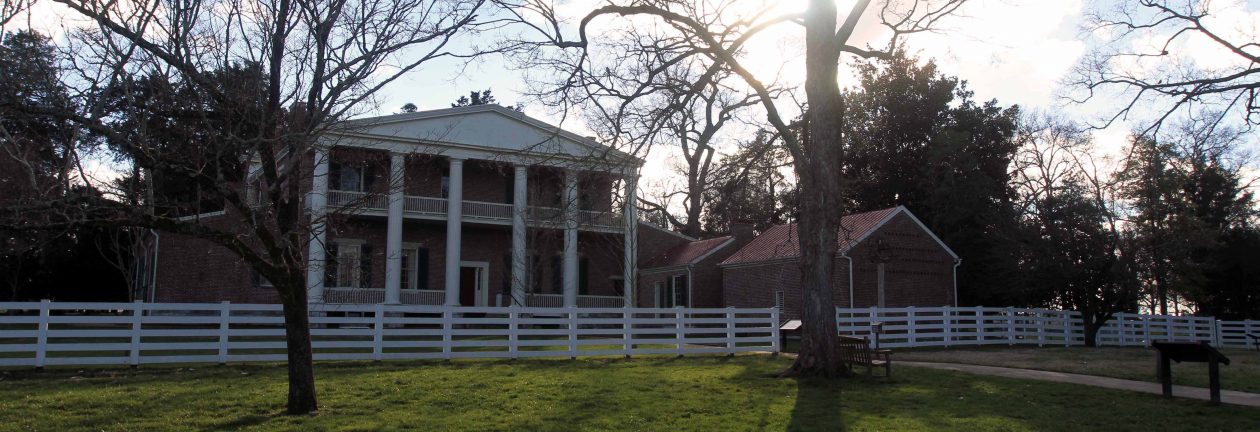Berat, Albania
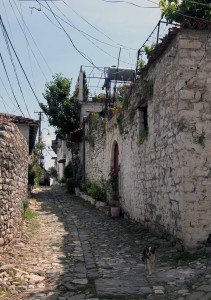
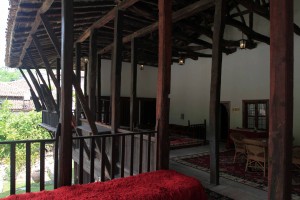
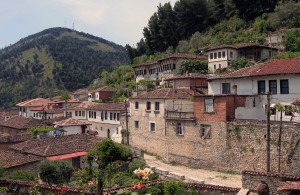
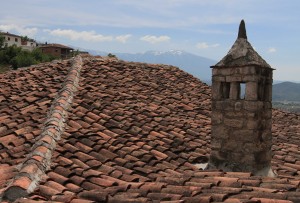
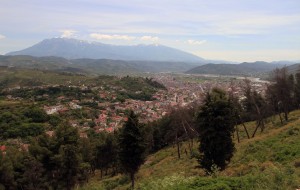
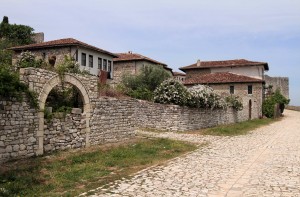
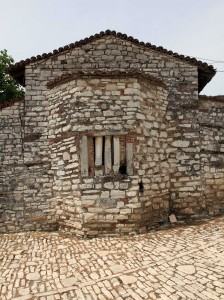
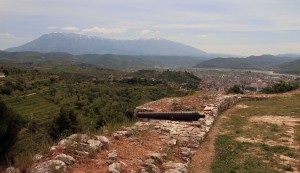
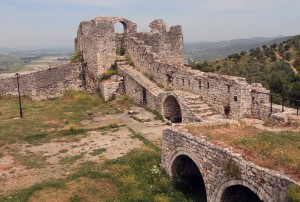
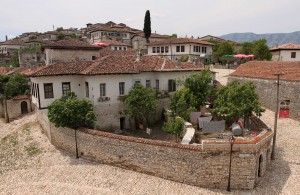
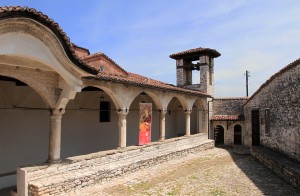
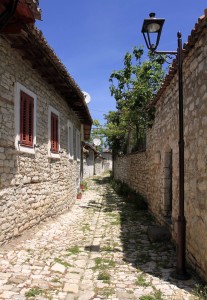
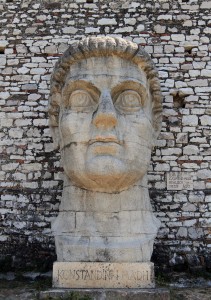
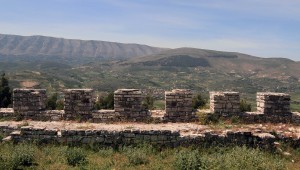
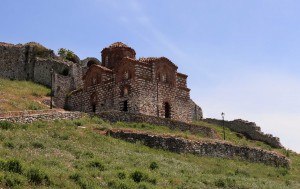
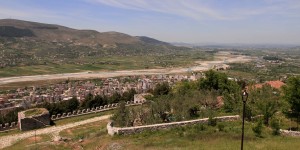
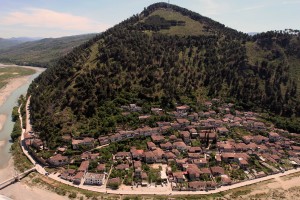
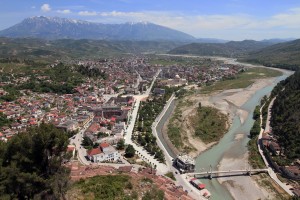
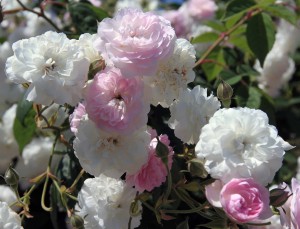
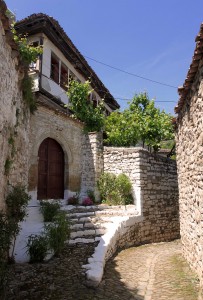
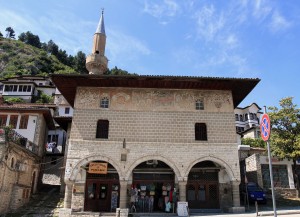
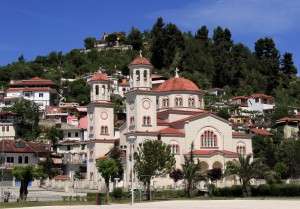
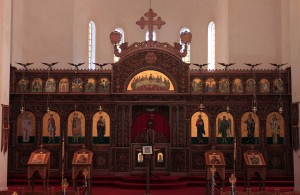

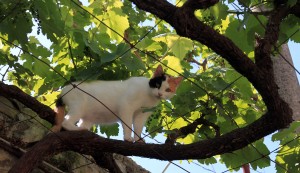
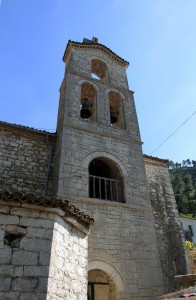
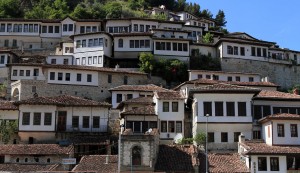
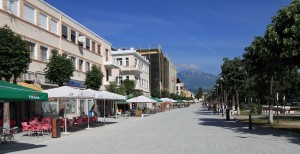
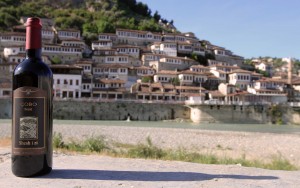
I woke up today after 08:40, got dressed, and had a cup of coffee, French toast, and a cube of cheese for breakfast. I then grabbed my camera and tripod, and exited the hostel to explore the town of Berat. The town of Berat is split in to two neighborhoods by the Osum River; Gorica (which is where I way staying, in the hostel) was on the south side of the river and Mangalem (with the castle) was on the north side. In ancient times, Berat was called Antipatrea, after Antipater, Alexander the Great’s regent of Macedonia; later it was called Pulcheriopolis, after the sister of Emperor Theodosius II. I crossed the Gorica Bridge (a footbridge with several arches, built in the eighteenth-century AD) and walked to Mangalem. I then followed the roads up toward Berat Castle and stopped at the Ethnographic Museum, which was an old Ottoman house converted in to a museum; on the first floor, there were displays of embroidery, tin objects, olive presses, and other tools. On the second floor, there was a veranda, a kitchen, two guestrooms, a working room, and a bridal room – all laid out as they would’ve been over a hundred years ago. After walking around the house and touring each room, I exited the museum and continued up to the castle. I took a trail up the side of the mountain and entered through the eastern side. The castle is built on the mountain above Mangalem and there are still homes and businesses operating within the castle walls. I walked around the castle area, to the main entrance on the northeastern side, and then to the Onufri Museum, which was the Cathedral of the Assumption of the Virgin Mary – a three-naved Byzantine basilica that was rebuilt in 1797 AD. I entered inside the museum and walked around the old Byzantine basilica (still very much preserved) and looked around at the pulpit, the iconostasis (with all its iconography), and the altar. I then walked in to the additional rooms and viewed some more Orthodox artworks before exiting the museum. I continued to explore the castle area, coming across a large bust of Emperor Constantine, a couple of old Byzantine churches (that were not open to the public), children playing football, and adults cutting down two young trees to use as poles for a volleyball net (why they had to kill two trees and not just use existing poles must be due to “human ingenuity”). I then followed the western wall to the southern tower. Next, I followed the eastern wall northward, back to the entrance I had used to enter the castle earlier. I then hiked back down to the city itself. I passed by the Bachelor’s Mosque (built in 1828 AD) and followed the promenade to the center square. I then paid a visit to the Church of St. Demetrius and looked around inside. Next, I stopped at a market and bought some much needed water (1.5 liters) and a can of lemonade. I drank this at the park along the promenade before continuing to wander around. I crossed the Osum River along the Gorica Bridge, once again returning to Gorica. I walked around, took a photograph of a little girl at her behest, and walked to the Church of St. Spiridon, which is a church that was built in the early nineteenth-century AD; an old man with a cross emblazoned on the back of his coat showed me around and explained everything to me in Albanian (even though he knew I spoke English); I looked around inside and then left the church. At this point, I decided on a plan for the rest of the day. I walked to a market on the Mangalem side (crossing the foot-suspension-bridge this time) and bought water, nuts, dried cranberries, cheese, bruschetta pieces, dark chocolate, and a bottle of Albanian wine. I then returned to the hostel (at 17:00), went through the photographs I took today, and typed out some journal entries. Later on, after 19:00, I broke out the bottle of Albanian dry red wine I had bought (made out of “Shesh I zi” grapes, which is considered the “father” of Cabernet Sauvignon); the wine tasted of raspberries, cherries, and blueberries and was refreshing and enjoyable. While I was drinking this bottle, the hostel owner gave me a glass of his own wine to sample, which tasted more like plums and raspberries; he then gave me a glass from another bottle of his own wine and this one tasted lighter (not as bold) with a hint of plum. I continued to drink my wine while eating some walnuts, dried cranberries, and the bruschetta pieces with cheese. Then, a retired American (who is cycling around Albania) came over and we talked for a while (we had both been in Nepal in October – him a couple of weeks before I arrived) and we both discussed our thoughts on the Annapurna Circuit – the roads suck and are ruining the trail (i.e. they should stop building them). At 20:30, my diner that I had ordered earlier was served and I ate an Albanian-style salad (tomatoes, onions, green peppers, and olive oil), bread, French fries, and a fried tube of beef stuffed with cheese – this was very nice, albeit a bit salty. I finished my dinner, all the while listening to opera, crooner, and foreign crooner music that the hostel owner was playing. I then got back to work on typing out journal entries and drinking my wine. Finally, after 23:00 I quit for the day and went to bed, falling asleep shortly after midnight.
